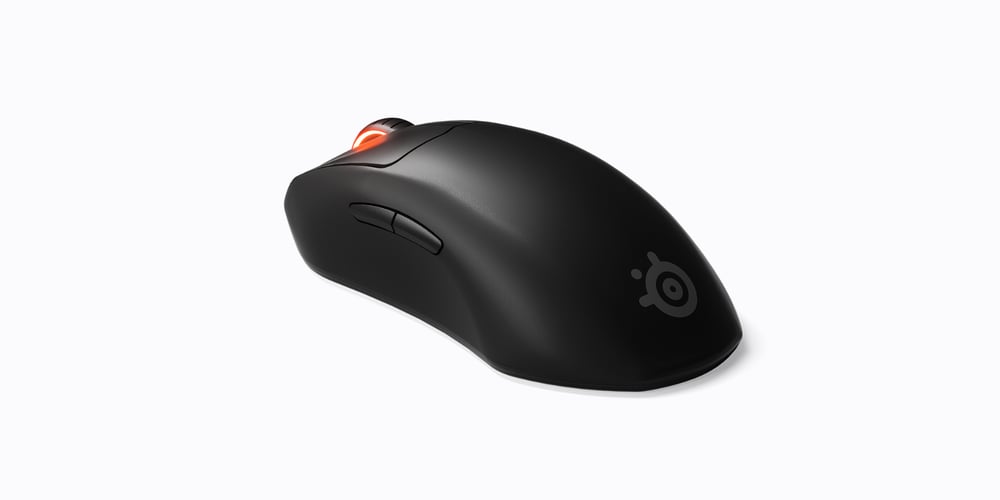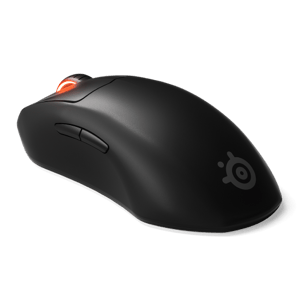SteelSeries is a brand that needs no introduction with gamers. They’re responsible for some of the most well known products in the scene, including the QcK line of mousepads and the Apex Pro line of keyboards, but their mouse division has fallen off a bit in recent years. Even though the brand has some legendary mice in their repertoire, their recent efforts haven’t quite managed to gain traction in the pro or mainstream scene. The SteelSeries Prime Wireless is a possible first step in changing that.
CS:GO Major winner Finn “karrigan” Andersen used a Prime (wired) to win the Antwerp Major earlier this year, and the wireless version of this mouse (which karrigan is using at the time of writing this review) has some exciting specs and features that should theoretically make it a great option for competitive gamers. We’ve sent one to our reviewer to find out if this is an underrated weapon or if it’s a mouse that you should pass on. Our full SteelSeries Prime Wireless review has all the details.
At A Glance
SteelSeries Prime Wireless
Used by 2 players ()The SteelSeries Prime Wireless is definitely an interesting product with some absolutely fantastic features, but it has a couple of flaws that keep it from being a straight up recommendation.
Pros
- Original shape
- Great coating
- Great build quality
- Flawless wireless performance
Cons
- Very heavy clicks
- Wheel is too heavy to click
- Budget (though flawless) sensor used in a flagship mouse
Specs
| Sensor | TrueMove Air |
|---|---|
| Polling Rate | 125 / 500 / 1000 Hz |
| Button Switches | Omron |
| Button Force | 150g |
| Connection | Wireless |
| Shape | Ergonomic |
| Length | 12.43cm |
| Height | 4.24cm |
| Weight | 80g |
| Width | 6.79cm |
First Impressions
Even though I used to main a SteelSeries Rival 300 way back in the day I must admit that it’s been a while since I tried a SteelSeries mouse, so I went into this review without any expectations whatsoever. I don’t know if it was that whole ‘no expectations’ thing or not, but I immediately felt extremely impressed when I opened up the packaging and felt my way around the mouse.
The Prime Wireless feels extremely well built, and its zero holes design with minimal RGB (the only RGB on the mouse comes in the form of a thin strip on the scroll wheel) makes it look classy and refined. What’s curious is that the Prime Wireless feels extremely substantial. I don’t know if it’s the shape or the weight, but the mouse feels extremely stable and, for lack of a better word, ‘present’ to me. That’s both a pro and a con. If you’re someone who likes to zip around in fast-paced games such as Fortnite and Apex Legends you might prefer a zippier mouse, but if you’re mostly focused on tactical shooters like CS:GO or VALORANT you might be right at home with your hand resting on the Prime Wireless.
I already know that people will be complaining about the weight (which is around 80 grams) but for me personally, the weight is no objection. Not every mouse needs to chase the ultralight high, and there are people out there who enjoy slightly heavier mice, so I don’t see this as a negative at all. I personally don’t really care too much about weight as long as it’s under 90 grams these days, but I know that some tactical FPS players actually prefer heavier mice due to the stability that they offer so it’s not as if there’s some universal lighter = better rule if you ask me.
Packaging
Inside the box you’ll find the mouse, the USB-C wireless receiver, an adapter for said wireless receiver, and an extension/charging cable.
Given the fact that this mouse is priced at the top end of the spectrum and aimed at competitive gamers, I would’ve loved to see some replacement mouse feet in the box. There are handy cutouts for removing these feet, so it would’ve been cool to see a reason to use these cutouts included in the box.
Shape, Coating, and Mouse Feet
The SteelSeries Prime Wireless has an ergonomic shape that reminds me of a slightly more aggressive, more locked-in ZOWIE EC shape. That’s not to say that it’s a clone (it really isn’t) but rather to give you a frame of reference if you’re unfamiliar with this shape.
What you get here is a mouse that’s extremely comfortable and has a number of well thought out design choices behind it. The fact that the main mouse buttons don’t overhang the shell is one, the little area that allows you to place your ring and/or pinky finger is another. The centralized and gradual hump feels completely inoffensive and allows you to grip the mouse in a variety of ways, and the overhang on the left side greatly aids with picking up the Prime Wireless. The asymmetrical outward curve at the back makes for a mouse that nestles itself firmly in the palm of your hand if you grip it towards the front, but it’s not so wide or sudden that it ‘locks you in’ like you can get with mice like the Endgame Gear XM1, for example.
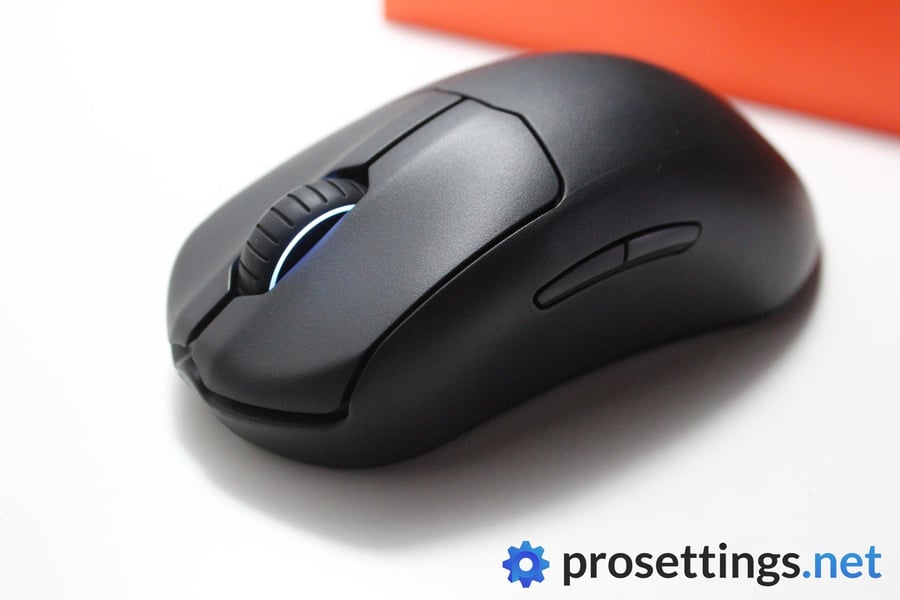
Shape is of course completely subjective, but I happen to love this shape. This tilted ergo design feels almost perfect in my hands (18x.10.5 cm with a claw-dominant grip) and the gradual curve near the thumb area really helps me with micro movements such as spray control without feeling too aggressive. Do note that it’s a less safe shape than something that’s a bit more flowy and natural such as the EC.
Another thing that I love is the coating. SteelSeries even has a name for it: the VDI30 Tactile Microtexture coating. I don’t know if this is proprietary or not but it’s one of the best coatings I’ve ever used. It feels every so slightly rubberized to the touch, and it’s extremely grippy and comfy. It’s not the easiest surface to keep clean; after a while, sweat and skin oils will visibly build up, but the coating felt absolutely great to me even after some hard-fought sweaty matches of Overwatch 2 and CS:GO.
On the bottom there’s one large skate, accompanied by two smaller ones near the top, along with a sensor skate. These mouse feet feel smooth straight out of the box. I had absolutely no issues with these feet on any mousepad, glass speed pads included.
Recommended Grip Types
I see the Prime Wireless as being an ideal mouse for both palm and claw grip due to the comfy, yet unaggressive style of design that it utilizes. Fingertip grippers should probably look elsewhere since the buttons are fairly high up on the shell and very stiff (more on that in the next section) and the asymmetrical curvature of the back doesn’t really allow for a fingertip grip if you ask me.
Note that this section is just a guideline, not gospel. Whether or not a shape works for you comes down to personal preferences.
Buttons and Scroll Wheel
This Prime Wireless is my first introduction to SteelSeries’ Prestige OM switches, and I’m not a fan. These optical/magnetic switches (hence the ‘OM’) have some exciting technology in them, giving them greater durability than traditional mechanical switches and eliminating the chance of accidentally double clicking somewhere down the line, but they just feel way too heavy to me.
As you may or may not know I am a fan of heavier and more substantial clicks, but these rather loud OM switches are just too much for me. The clicks require around 110 grams of force to actuate, which is the heaviest I’ve ever measured on a gaming mouse. The average, for reference, currently sits around 77 grams. That’s not to say that they’re unusable but I get the feeling as if I’m having to press the buttons through a tiny glass sheet with every press, and it’s not a feeling that I particularly enjoy.
I also felt as if there was some slight delay in these clicks. I cannot scientifically confirm this, but I had a few instances where I missed a shot and had the feeling that it wasn’t down to my aim, but rather due to my click timing being off. That probably also has something to do with the buttons being heavy to press, though, and I didn’t get any objective measurements to confirm that the click latency is anything out of the ordinary, but it’s something that I should mention regardless. If you’re coming from lighter switches, these will take time to get used to.
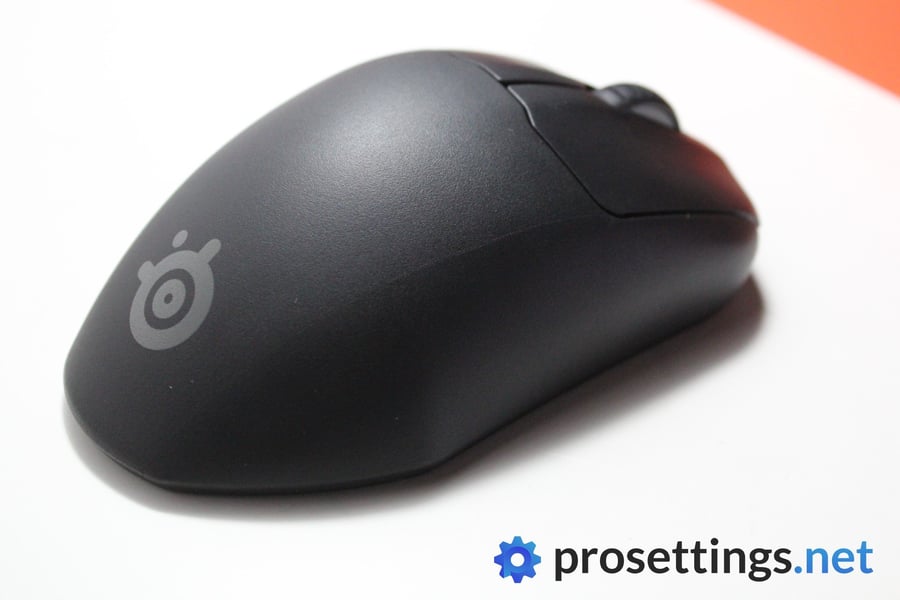
The clicks are implemented nicely, though. There’s some pre- and post travel, but not nearly enough to be noticed by me in any gaming scenarios, and there’s no button rubbing or perceivable sideways movement on my copy. Stick a slightly less tensed-up switch underneath these buttons and they’re good to go as far as I’m concerned.
The side buttons feel fantastic. There’s almost no travel on either of them, and they don’t have that annoying problem where they travel inside the shell if you press them too close to the edge either. Top that off with a pleasing, crispy actuation and you’ve got a great set of side buttons. No remarks here whatsoever.
The scroll wheel also feels great. It’s got well defined notches in it, but it’s not too tactile to the point where it becomes tiring to use for something like jumping in games. It’s also on the quieter side, which I like. Sadly, the force required to press the wheel button is also too high for my liking. It’s not a massive problem as I don’t use the middle mouse button for any ‘sensitive’ inputs, but they could loosen this up a little bit.
Build Quality and Cable
As I briefly mentioned in the intro to this review, the Prime Wireless is built like an absolute tank. The shell doesn’t creak or flex, no matter where I’m applying pressure, and the whole product feels as if it can take a serious beating. You can hear the scroll wheel moving around a bit when tapping and shaking the mouse, but the wheel doesn’t feel loose when using it and there’s no rattling or moving sensation when using the mouse normally. The fact that you can barely see the seams where parts of the shell have been put together only adds to the sturdy, reliable feeling and look of this mouse.
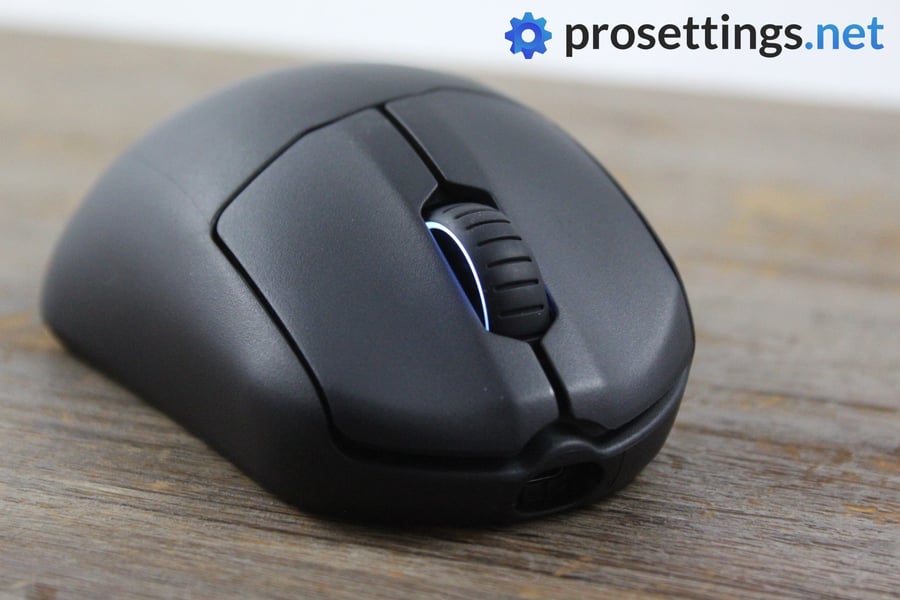
Something important to note is that the weight balance on the SteelSeries Prime Wireless is front-heavy. To me, that’s not an issue; with my playing style and the way I pick up mice I am absolutely fine with both balanced and front-heavy mice (not so much with back-heavy mice though) but it is something that’s incredibly important to note since some people absolutely need a balanced mouse. If you tend to lift your mouse towards the back or you know you need a balanced weight distribution, you should make sure to at least try this one out before purchasing.
The included charging cable is nothing special, but with a battery life of around 80 hours you’re not likely to ever need it while you’re gaming. It is possible to use the mouse while you’re charging it, but I would strongly recommend keeping it topped up so you don’t have to use the cable. The cutout for the charging cable on the mouse itself also doesn’t accommodate all third party cables, so make sure to keep track of the included one, especially if you’re going to a multi-day LAN or what have you.
Sensor and Everyday Performance
SteelSeries use their TrueMove Air sensor in the Prime Wireless. That one is based on PixArt’s 3335 sensor which is, as you might know, a sensor that’s aimed more towards the budget end rather than the top end. The 3335 is a flawless sensor, so to me it doesn’t really matter that it’s a budget sensor, though I know some people don’t share that opinion.
I do understand their point of view: this is SteelSeries’ flagship mouse and it’s very much priced that way, so it’s a bit of a bummer to see them using a budget sensor, but performance-wise there’s absolutely nothing to worry about, and the sensor is implemented correctly so there’s are no irregularities to be found. Whether or not the inclusion of a ‘budget sensor’ (don’t forget that SteelSeries has also reworked it) is a deal breaker is something that you will need to decide for yourself, but I’m not bothered by it at all.
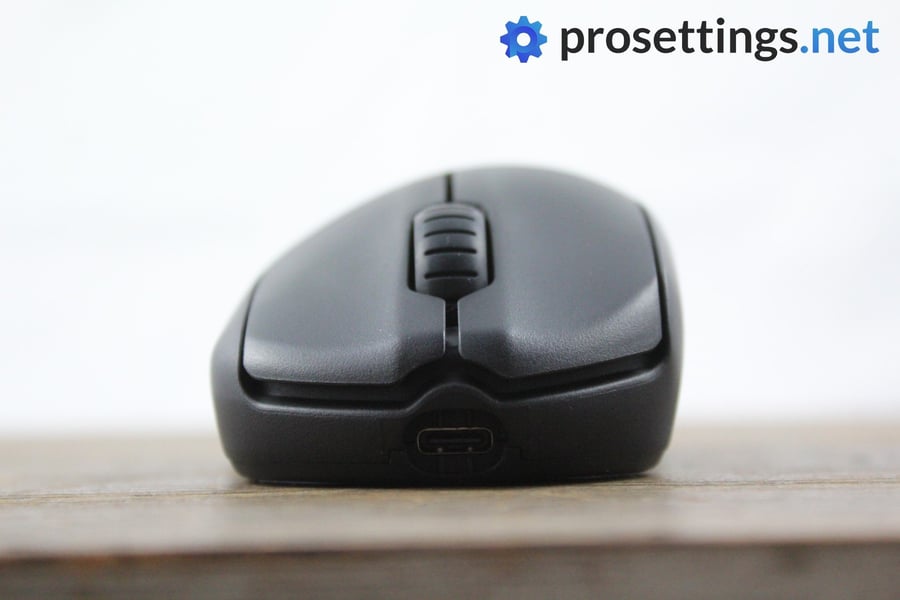
Something that does bother me a bit is the wake up time. After some time, the mouse goes to sleep, and after waking it up it can take a couple of seconds for it to respond properly. This isn’t something that’ll limit your ingame performance (unless you’re playing games where you’re absolutely static with your crosshair or character for 5 minutes) but it’s a little bothersome for day-to-day usage.
The Prime Wireless can be fully configured in SteelSeries’ GG software, and I like this software. All of the options are clearly laid out and it’s easy to use, and given the fact that the Prime Wireless has onboard memory you won’t have to keep the software installed if you don’t want to use it.
SteelSeries’ wireless technology works perfectly, and I experienced no dropouts or connection issues during all of my testing period. This testing was done with a wireless headset and two other wireless mice connected at any given time, so their Quantum 2.0 Wireless technology gets top marks from me.
I don’t particularly love the fact that the wireless receiver goes into a USB-C port since a lot of PCs don’t even have USB-C ports on them just yet and this means that you will need to bring the adapter bit everywhere you go, but you do of course get that adapter in the package so I won’t fault SteelSeries for using the more future-proof alternative here.
SteelSeries Prime Wireless Alternatives
The Prime Wireless uses an original shape design, so you’re not going to find a 1:1 replacement. Obvious contenders are the various other wireless ergonomic mice such as the Pulsar Xlite V2 Wireless, the Razer DeathAdder V3, and the Glorious Model D Wireless, but those are both based on the more natural-feeling, less aggressively formed ZOWIE EC. That one is of course also an option if you’re looking for an ergonomic mouse, although the ZOWIE EC isn’t available as a wireless model just yet.
The Razer DeathAdder V2 Pro could also be considered as an alternative wireless ergo option, though that one is even more different when it comes to the shape with its longer, flatter, more natural shape design.
SteelSeries Prime Wireless Review – Conclusion
The SteelSeries Prime Wireless is definitely an interesting product with some absolutely fantastic features, but it has a couple of flaws that keep it from being a straight up recommendation.
The clicks, for one, are the heaviest clicks I’ve tested on a mouse so far, and I felt as if there’s a touch of delay in the buttons too. Whether that was down to the overall heaviness of the clicks or whether there’s a delay in the switches themselves I sadly can’t confirm, but what I can confirm is that these switches/buttons aren’t it for me. The scroll wheel button suffers from the same issue, though the wheel itself feels great to use.
I won’t say that the usage of a ‘budget sensor’ is a con because the point of a sensor (to me) is to translate all of your movements to the PC with no interference or artificial changes, and the TrueMove Air does exactly that, but I do understand the POV that it’s kind of a bummer to see a budget sensor (or at least a sensor that’s based on one) in a flagship mouse.
So yes, the SteelSeries Prime Wireless has its flaws, but it also has great strengths. The shape is a welcome variation on that traditional smooth EC shape, the coating and build quality is absolutely top notch, the feet feel smooth and offer a great glide straight out of the box, and the wireless implementation is flawless. This is a really good gaming product, and if you can live with its flaws you should definitely consider purchasing it, but as it stands it’s held back from being as good as it could be due to those aforementioned flaws.
I’m eagerly awaiting a refresh of this mouse shape, since there’s a lot of potential here, and if they nail that this has all the making of being my next main mouse.
This product was received for free from the manufacturer and given to our reviewer to test and review. Brands and manufacturers have no editorial control over our reviews. For more information, check out our review FAQ.


